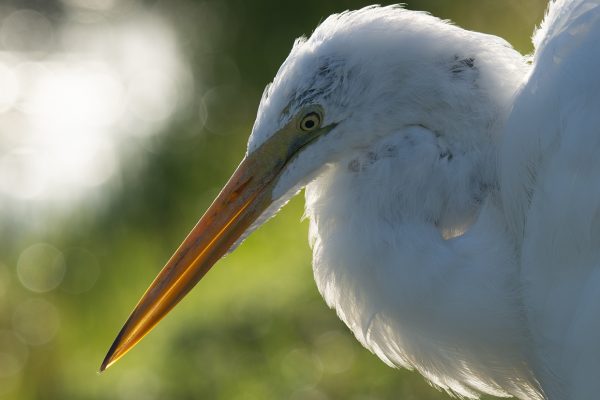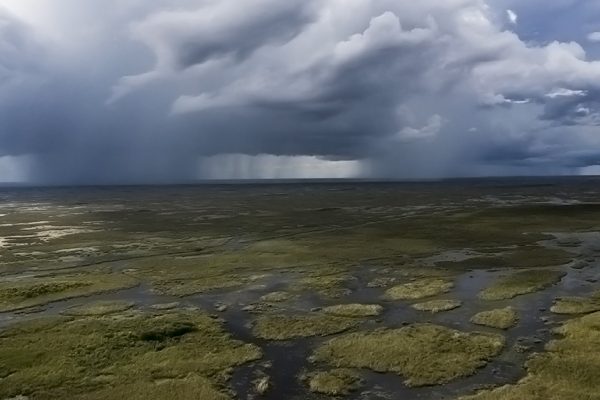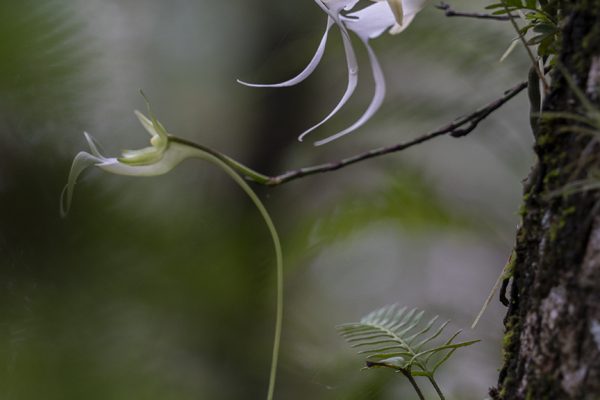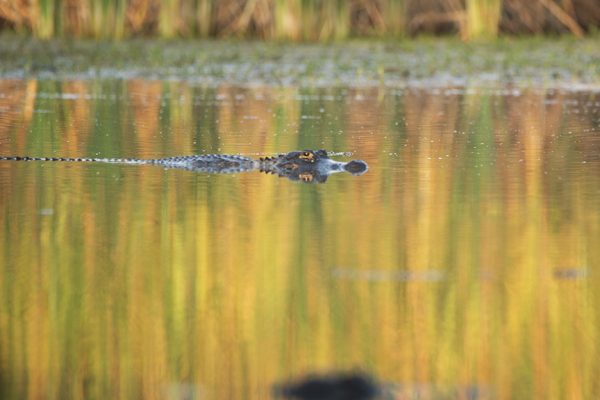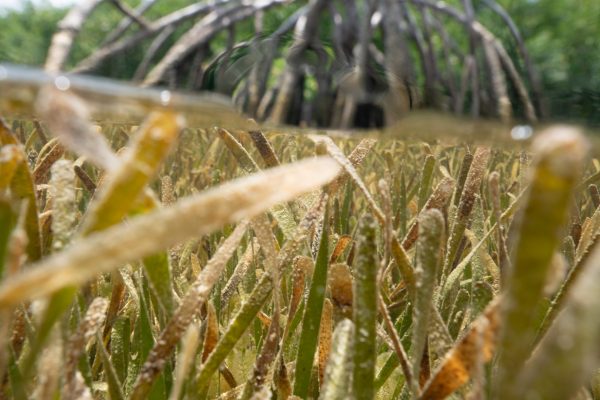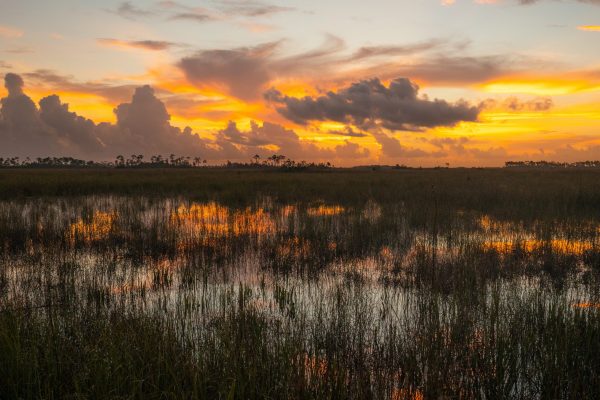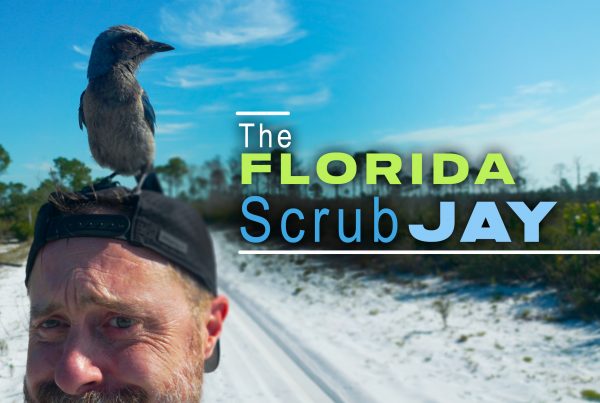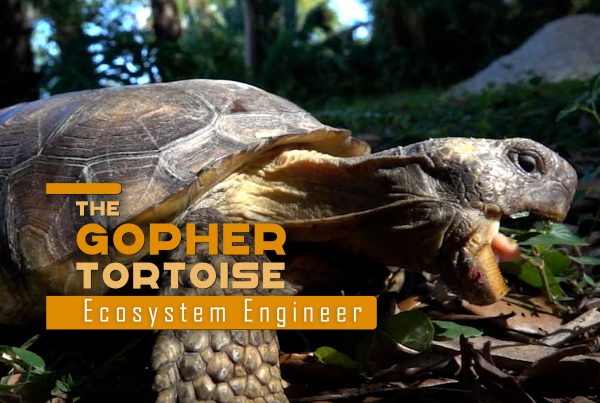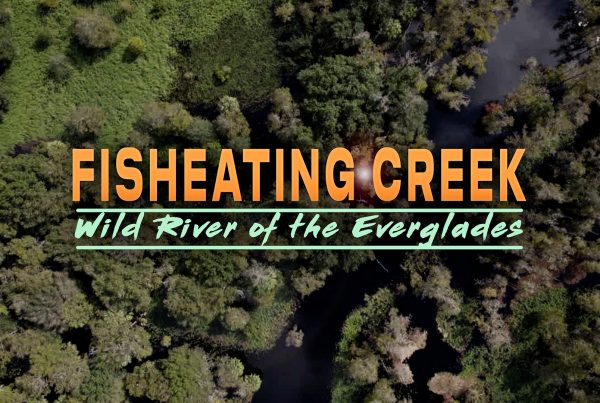Odyssey Earth explores the habitats and inhabitants of the Everglades bio-region: a vast wilderness area whose eastern boundary hugs the sprawling urban landscape of Miami.
While the Everglades is a wild, seemingly endless wetland ecosystem, it has been tamed. Audiences will learn about how the watershed has been altered, the threats faced by invasive species, and the looming effects of climate change.
Part 1- The Ecosystem
Intro
Miami: it’s a concrete jungle. Sure, you’ll find a palm tree here and there, and I admit, we’ve got a spicy, vibrant culture. We also have thousands of acres of pavement, houses and high-rises. Close to 3 million people call Miami home. Multiply that times 6 and that’s how many tourists flock here each year. This is a colorful, creative, wild place. But these are not the main reasons I love Miami. The main reason I love Miami is that it hugs the edges of a true wilderness.
There is no place like the Everglades. It is subtle, it is loud. It can be harsh, it can be stunningly beautiful. But it is also threatened.
Habitats
1.5 million acres of the Everglades rest within the boundaries of Everglades National Park: the first National Park established to protect an ecosystem. This landscape is more than just water and sawgrass. We also find salt marshes, mangrove forests and some of the largest seagrass meadows in the world.
To fully appreciate the Everglades, you need to get your feet wet. You’ll notice that just a few inches of elevation change can result in an entirely different habitat. Where there is a dip in the marl prairie, you might find a cypress dome. This magical world is full of botanical surprises: Rare orchids, colorful bromeliads. Some are haunted by ghosts.
Pine rocklands get their name from the slash pines that grow on limestone ridges in South Florida. Saw palmetto is also found here, as well as over 200 other species of plants, not to mention a fascinating array of animal life. About 20 percent of the plant species here grow nowhere else in the world! Sadly, this is a disappearing habitat.
“Right now we’re at the Deering Estate, a rare forest oasis in the middle of what we call the Miami Ridge- an elevated spine of land that runs along the eastern edge of South Florida. 150 years ago, forests like these would have flourished all along this ridge. Now, houses grow instead. Only about 2 percent of the pine rocklands that used to cover South Florida remain.”
Pine rocklands require one thing you might not expect: fire.
“Everything’s connected. So if we were to take fire out of this ecosystem, what we see is a hardwood hammock-like environment that wants to come in. We’re supposed to see fire in this ecosystem about every 3-7 years, and that fire sort of works its way through this herbaceous layer that we see behind us, burning that top layer off and it kind of gives a pulse, a nutrient pulse to the ecosystem and that’s where we see that vibrant regrowth. If you were to take fire out, that’s when you see that hardwood hammock component come in and the shade intolerant understory that we’re seeing, this herbaceous layer, eventually disappears.”
The plants that grow here have adapted to resist, and even rely on the occasional blaze.
Adaptation is a change or the process of change by which a species becomes better suited to its environment.
The thick, flaky bark of the slash pine, for example, protects its inner trunk from heat. Its branches emerge high in the canopy. Fire also prevents succession, by discouraging plant species that are not as fire resistant from taking over.
Succession is the replacement of plant species in a habitat as the environmental conditions change over time.
The diversity of flowering plants in the pine rockland attract a diversity of butterflies; some endangered like the Bartram’s hairstreak.
The zebra long-wing is uniquely social, gathering nightly at communal roosting sites, and the opportunity for procreation also attracts a crowd.
The corky stem passion vine is their host plant. Look closely and you might find tiny eggs glued to the leaves. Once an egg hatches, the caterpillar gets to work.
After fattening up for a couple of weeks, the caterpillar attaches itself to a leaf, its exoskeleton hardening into shell called a chrysalis. Inside, the miracle of metamorphosis is taking place.
Pheromones released from within the chrysalis have announced that this is a female, and the guys are already flocking. Before her wings have finished drying, one lucky male is given the opportunity to mate with her. And so the cycle of life continues.
An egret’s view of the Everglades reveals islands dotting the prairies; tear-drop shaped by the slow-moving water. These are subtropical hardwood hammocks: jungly, humid tree islands, offering high ground for terrestrial animals, shade and shelter for birds. A cardinal fledgling is difficult to spot among the tangle of branches. Rest assured, mom won’t lose track of her hungry chick.
A female golden silk orb weaver is preoccupied with lunch. This male, is preoccupied with…her. He needs a bit of luck, however, because if he doesn’t play his cards right, she might just eat him instead. She’s enormous, he’s a pipsqueak. Fortunately for him, the timing is right. It looks like the key to her heart is through her stomach.
This male orchard spider, on the other hand, is just a bundle of nerves. He’s trying every trick in the book to get this female’s attention: web plucking, pedipalp waving. Is she impressed? Apparently not. Rejection is rough, but hey, at least she didn’t eat him.
Today, ranger Yvette Cano and my daughter Scout are searching for treasure. They’re quite rare, but look closely and you still might spot a few.
“Liguus tree snails are incredible jewels of the Everglades. They actually speckle the hardwood hammocks with just the right amount of jewelry, if you will. They’re absolutely beautiful and these days they’re so difficult to find that it makes them even more valuable, just like jewels”
Liguus tree snails don’t migrate far. Over time, isolated populations on remote tree hammocks developed their own unique color patterns, and the variation was spectacular.
“Since the beginning of time, humans…we just love pretty things. That’s not always good for nature, and that’s the case with the liguus tree snail. Their beautiful patterns were something that really attracted folks, just like they do today. Unfortunately, poachers took advantage of that. They actually would walk into a hammock, collect as many of one specific color pattern as possible and then set fire to that hammock, creating a monopoly of this one beautiful pattern, making it unique and then selling it for top dollar. Unfortunately this had a tremendous effect on the populations of liguus tree snails and they were almost hunted to extinction.
The Watershed
In 1947, author Marjory Stoneman Douglas published a ground-breaking book. It exposed the world to a wonderful ecosystem that unfortunately was suffering from human impacts. “The Everglades: River of Grass” gave this place its famous nick-name. But she wasn’t the first to coin the term.
“Our language is very descriptive. So when they name areas they give it a name that describes what they saw. So when our people came down, they saw the water and they saw the grass and they always understood that it was a river. So they coined the term ‘ Pa-hay-Okee,’ which means ‘River of Grass.’”
Before the Everglades was tamed, outsiders viewed it as a swampy wasteland, full of venomous snakes and stagnant water. For Betty’s ancestors, it was a place of bounty.
“You know our tribe, along with the Seminole Tribe, are the only ones that have never signed a treaty with the United States of America. Our seasonal home became our permanent home. A Miccosukee is here in the Everglades and in our time of need she hid us. There was a lot of food in the Everglades. You had a lot of deer, you had a lot of birds, you had a lot of, you know, alligators, a lot of fish and also a lot of wild fruits and root vegetables that we could eat out here. So she provided us, you know, a refuge.”
The Everglades is not a stagnant swamp at all. The water is dynamic. It moves. Some percolates down into the rock below. Much of it drifts slowly towards the sea. It is in fact a shallow, slow moving river about 60 miles wide and 100 miles long.
Historically, the story of the Everglades began near Orlando, where rainwater fed a chain of lakes, which flowed into the Kissimmee River, which meandered into Lake Okeechobee which over-spilled its southern rim, giving birth to the River of Grass. From there the elevation dropped ever so slightly through the Everglades all the way to Florida Bay. Water goes where gravity takes it, and in this case, it flows as a sheet of water. We call this slow, broad movement of water ‘sheet-flow.’”
The foundation of South Florida is a platform of limestone called the “Biscayne Aquifer.” An “aquifer” is like a hard sponge – an underground layer of rock or sand that holds water. During the dry season, the bedrock becomes exposed in jagged formations of pinnacle rock. Where it has dissolved away, solution holes form. Some of the water drifting through the Everglades seeps downward, “re-charging” the groundwater. This is incredibly important. For about 8 million South Floridians, the Biscayne Aquifer is our primary source of fresh water.
“When leaves and other organic material break down in fresh water, they release carbon dioxide. This makes the water slightly acidic, which over time, dissolves away the limestone beneath. This is how solution holes form, like this one in a hardwood hammock at the Deering estate. I like to think of these solution holes as windows into the aquifer.”
The main, deep artery of the River of Grass is the Shark River slough. The word “slough” describes a low-lying area that channels water through the Everglades. Much of the water carried through the Shark River spills into Florida Bay and the Gulf of Mexico where it mixes with seawater.
“Under natural conditions, the brackish waters of Florida Bay would be a thriving nursery ground for many species of fish, fringed by dense mangrove forests and blanketed with lush seagrass beds.
But this is no longer a system that functions naturally. Heavily altered by humans, the Everglades is a shadow of what it once was. What does the future hold, and why should we really care? Well we’ll dive into that a bit later.”
Part 2- Web of Life
Web of life
The Everglades exists in a complex balance of biotic and abiotic components. Biotic components are the living things…the plants, the animals and the ways they interact with each other. Abiotic components are the non-living things…the water, the geology, the climate and disturbances such as fire.
Every native species of plant and animal has adapted to fill a special niche, occupying an important role in this delicate web of life. Undisturbed, there is balance. Everything functions normally and life is good.
Where there is light, we find life. Autotrophs, or “producers” are able to harness the energy of the sun, transforming light energy into chemical energy through the process of photosynthesis. These plants are the first link in the food chain. Without them we wouldn’t have the heterotrophs, or “consumers” which make up the following links in the chain.
“Slogging through the prairie, you’ll notice a yellowish, spongy goo that coats the floor and clings to the aquatic plants. This stuff is called periphyton, and it’s super important. Scoop up a handful and you’ll see how it absorbs and holds water, which is crucial when the Everglades dries down during the winter and spring months. Periphyton is a bit hard to categorize because it’s actually a community of blue-green algae, fungi, decayed plant material, and lots of other stuff. If you tear into a lump you notice the green color from the photosynthetic cyanobacteria. Periphyton is an important source of food energy for tons of small, primary consumers.”
Whatever it is, tadpoles, aquatic invertebrates and small fish find it quite nutritious. And so does one of the Everglades’ most notorious inhabitants.
Spend enough time out here and you’ll likely donate pints of blood to swarms of mosquitoes. Only the females require a blood meal, necessary to produce eggs which are laid in rafts on the surface of the water. Once hatched, the young mosquito enters the world as an aquatic larva, feeding on periphyton and other organic material for a while. Eventually the larva transitions to a resting phase, curling into a question mark shape called a pupa. In a few days, the pupa floats to the surface and splits open. The birth of an Everglades Swamp Angel.
Fortunately for us, and this family of anhingas, the prairies and sloughs are also full of gambusia: the mosquito fish. Where does it get its name? Well, it’s obvious. The mosquito fish, loves mosquito larvae. Keep up the good work gambusia. My kind really appreciates the role that you play.
The more water that’s delivered into the Everglades, the more room there is for fish to reproduce. Gambusia, largemouth bass, Florida gar and about two dozen other native species make their home in this wetland ecosystem.
Plenty of fish means plenty of prey for water birds and each species is equipped with specialized tools and unique hunting methods.
Wood storks and roseate spoonbills feed by touch. The spoonie’s bill, though oddly shaped, is quite effective. Longer-legged wading birds, like the great blue heron and the great egret hunt by sight in deeper waters. If you’re a fish, you don’t want to be on the receiving end of those dagger-shaped bills.
Purple gallinules forage among the aquatic plants – their long, splayed toes are perfect for dancing across the broad leaves. These omnivores love the nutritious spatterdock seed-pods, as well as the juicy worms living within their stems. Occasionally, even a baby turtle is on the menu.
One swamp bird uses a different strategy. For the anhinga, the best way to catch a fish is to be like a fish. Sometimes called the water turkey…for obvious reasons, the anhinga is basically a swimming dart. Important tip: When swallowing a fish whole, make sure those dorsal spines are pointing in the right direction.
After a dip and a meal, it’s thermoregulation time. Water quickly draws body heat out of the bird. The anhinga’s broad, dark wings, as it turns out, double as personal solar panels. Handy trick.
During the dry season, fish become concentrated into smaller pools of water. The picking’s easy and the timing is perfect because spring is nesting season.
Wading birds of all varieties will begin breeding – from tricolored herons, to spoonbills and wood storks. But first things first. Males need to attract a mate, and they’ve got to look good. Check out this Great egret’s breeding plumage. And how about those moves?
This male anhinga is tearing up the dance floor too. Watch out ladies.
A few weeks later and now there are families to feed. These gangly chicks are never not hungry it seems, and they don’t have a lot of responsibilities. Young wading birds have only 4 jobs: nag, eat, and grow. And nag. Some of you watching this can probably relate. And just like us, they have an awkward teenage phase too. Gross. That’s certainly not how I do lunch.
If you think that’s bizarre, check out this softshell turtle. But guess what, she doesn’t care what you think. She’s too busy digging her own nest, and that’s a beautiful thing.
The American Alligator. No other animal conjures the wild, rugged spirit of the Everglades like this reptile. Here, the gator is king. It is stealthy, explosively powerful. It is the apex predator, an ancient survivor and architect of these wetland habitats. Over time, an old alligator nest may become a tree island. Where it wallows in the dry season, a cypress dome.
Dry season brings the same bounty to the alligators as it does to the wading birds. A remote pond in Big Cypress becomes a springtime oasis. With the fresh water of the Everglades swiftly dwindling, this remaining pool attracts a crowd and the fish have nowhere else to go.
For the gators, this is an opportunity to bulk up for the approaching breeding season. For a turtle, this is an awkward spot to be. “Just act cool man, try to blend in.”
While the dry season offers concentrated prey and easy dining for the alligators for a time, eventually that food supply will disappear. It’s getting hotter, and if the rains don’t come soon, feast will turn to famine, and some will not survive.
Part 3- Exotic Everglades
Exotic Everglades
For thousands of years, the alligator was the uncontested apex predator of the Everglades. But today this crocodilian competes with an infamous invader for the top spot.
“Python!”
The Burmese python. Growing as long as 19 feet, the hungry constrictor can give the alligator a run for its money. What’s worse, they are spreading and eating just about anything that moves.
“Yeah, the Burmese python. It is just an absolutely fascinating creature. For it to have taken over an ecosystem that’s pretty harsh, I call these Florida Burmese pythons. They’re not Burmese pythons anymore, they basically are top apex predators that have learned the environment in and out and just taken over. You know, they have to be amazing to be able to do that.”
The Burmese python problem is a human problem. Escaped pets have now become invasive predators and it takes a special kind of hunter to remove them from this embattled ecosystem. It’s a good thing Donna has assembled a team of python prodigies she calls the “Everglades Avengers.”
“Majority of the time you’re not going to see the whole snake. So when I’m trying to spot a python, I’m just trying to use my brain’s ability to do pattern recognition and I’m actually looking for that pattern on the skin. That’s 90 percent of the spots, when I spot a python, that’s what I spot is that pattern.”
Kevin is an experienced herper with an amazing ability to spot pythons. And he’s caught a ton. In fact he’s shattered the record for most Burmese pythons caught in a single month (133, the old record was 27).
“I moved from Indiana to Florida about a year and a half ago with the sole purpose of figuring out how to be a python hunter.”
And Amy has figured it out alright. In that time she’s caught just over 100 pythons, including this 17’ 3” monster all by herself.
“One of the hardest parts about hunting the pythons is that we have to euthanize them. They’re beautiful, fascinating and amazing creatures and it’s not their fault that they’re here. If that’s the case, then we should do everything we can to use as much of the python as we possibly can so they don’t go to waste, so they don’t rot in a pile somewhere.”
Python hunting and high fashion don’t often go in the same sentence. Amy, however, has teamed up with BSwanky, a local brand that is fashioning designer handbags out of the skins of pythons removed from the Everglades. A portion of their proceeds supports the work of The Alliance for Florida’s National Parks. A win-win if you ask me.
“That, folks, is exciting!”
“Exotic species” are plants or animals that are non-native. Some are relatively harmless to the ecosystem while others can significantly modify or disrupt the ecosystem they colonize. Those exotics are referred to as “Invasive species.”
South Florida’s subtropical climate has become a comfortable home to a wide variety of invaders. We find them in practically any body of water, whether it be fresh or marine. Some we just take for granted as if they’ve always been here.
Plants can be invasive too. Among the worst is an Australian tree called melaleuca which has completely taken over thousands of acres of Everglades marsh.
Invasive species displace the native ones, outcompeting them for resources and disrupting the natural web of life in the Everglades.
My buddy Mike Lloret loves reptiles of all kinds. For a herpetology enthusiast, this is a great place to live and work.
“Here in South Florida, we are extremely privileged to be the only place in the world where both crocodiles and alligators live in the same areas and coexist in the wild.”
Not long ago, Florida’s American croc population was on the verge of collapse. Fortunately, they have rebounded thanks to important conservation measures.
Mike is in charge of studying and monitoring crocodiles at Turkey Point Clean Energy Center which has become an important nesting site. It’s never a dull day at the office, and tonight, I get to lend him a hand.
“Crocodiles have come such a long way here in South Florida. And when you look at potential threats to them as a species, you think about things such as invasive species. A threat like the tegu, which could potentially impact the crocodiles before they even hatch could pose a big-time threat to the American crocodiles here in South Florida.”
The Argentine black and white tegu is gorgeous. It is also an invasive, opportunistic predator. The tegu is no match for a big croc, but here’s the problem. This sneaky lizard loves eggs. All kinds of eggs.
“We have evidence that tegus actually prey upon alligator eggs. Because there are a lot more alligators, we tend to find more tegus eating alligator eggs. However, because they have a taste for those eggs, we know that they can become a direct threat to the American alligator. So here at Turkey Point, we have an invasive animal management program where we try to eradicate all of these invasive species and keep our lovely native crocodiles protected.”
Large reptilian predators get all of the attention. But you don’t have to be big to cause big problems.
This isn’t just any worm. This is the New Guinea flatworm and it is terrifying. If you’re a snail at least.
“The New Guinea flatworm is a large threat to these liguus tree snails. They actually start at the base of the trees and they follow the trails that the tree snail leaves as they crawl up or come down the trees. Eventually finding the tree snails and eating them.”
First discovered in Florida in 2012, this invasive predator has had a quick, devastating impact on our native snail communities. Hammocks which once hosted thriving populations of tree snails, including the gorgeous liguus tree snails, have become graveyards of empty shells.
Meanwhile, the zebra longwings have their own enemy to contend with. Wasmania: the little fire ant. For this Central American species, butterfly eggs and larva, like these zebra longwing caterpillars are easy targets. Often called the “electric ant,” this tiny insect can give humans a painful bite. For butterflies, they are an existential threat.
One species, however, has caused more damage to the Everglades by far than any other. This one has two legs and a large brain.
Part 4- Human Invasion
“Despite our intelligence, we’ve made a mess out of things by completely altering the way the Everglades functions. It all started over 100 years ago, when efforts began to literally drain the swamp. How about a quick recap”
Before humans altered the system, the Everglades was over twice the size that it is today and the watershed began way up north in the Kissimmee River Valley. Rainfall near Orlando filled the Kissimmee River which flowed into Lake Okeechobee, which over-spilled its southern boundary, giving birth to the River of Grass. From there, it drifted slowly southwest, eventually mixing with sea-water in Florida Bay. But a lot has changed.
Early settlers discovered that South Florida’s warm climate was perfect for growing crops all year round. But the swampy marshes were great for gators, not agriculture. If the wetlands could be drained, there would be plenty of land for crops and development.
So canals were dug to channel the water away from the Everglades and a massive dike was built around Lake Okeechobee, preventing seasonal flooding and blocking the southern flow of water. These projects helped create the Everglades Agricultural Area where the headwaters of the River of Grass used to be.
“Today the EAA is like a giant cork in the Everglades bottle. Instead of sawgrass, we now find sugar cane….hundreds of thousands of acres of sugar cane.”
To make matters worse, Lake Okeechobee was being polluted from urban and agricultural runoff to the north. Since its waters couldn’t flow into the Everglades like they used to, two rivers were altered to divert that water East and West. When water is released from Lake Okeechobee through the Caloosahatchee and the St. Lucie Rivers, its nutrient-rich contents contaminate important estuaries on the west coast and the east coast. Fish die. Sea grass beds collapse and nasty blooms of blue-green algae are becoming more and more common.
Meanwhile, the southern Everglades and Florida Bay are dying of thirst. Everglades restoration efforts to increase water flow into the system include new reservoirs to store water, filter marshes to clean it, pump stations to move it and elevated bridging over Tamiami Trail to allow that water to flow into the southern Glades.
But the Everglades doesn’t just need more water. It needs clean water. A significant amount of pollution flowing into the River of Grass comes from urban areas like Miami: Run-off from dirty streets and from lawns and golf courses that are pumped full of fertilizers. In one way or another, we’re all contributing to the problem.
Human impact on the environment is extensive and far reaching, even deep in the central Everglades. Areas that, not long ago, were pristine marsh land, are becoming choked with nutrient-loving cattails and weedy invasive plants. Even more alarming are scummy blooms of blue-green algae that are fueled by nitrogen and phosphorous in the water. This stuff is not only bad for the environment and nasty to look at, but potentially very harmful to our own health.
New research indicates that a neurotoxin called BMAA, which is released by certain species of cyanobacteria, can bio-magnify its way up the aquatic food chain. It can kill fish, large marine mammals and potentially humans. Scientists are discovering that when people consume seafood taken from areas that experience frequent algal blooms, this can cause elevated levels of BMAA in human brain tissue which can lead to degenerative brain disorders similar to ALS and Alzheimer’s disease. Cleaning up the Everglades, in my opinion, is a no-brainer.
Part 5 – Rising Tides
Pure, fresh water is the life-blood of the Everglades but this wetland ecosystem has been drying up. Meanwhile, our oceans have been rising.
“Climate change has opened our eyes to a threat that could have huge impacts on not only the Everglades, but our ability as humans to thrive in South Florida. Most us live in houses perched just above sea-level. That means just a couple of feet of sea level rise could mean ocean water in your living room.”
While we can observe the waters rising above ground, we can’t easily see what’s happening below. But we can taste it. I’m talking about something called “saltwater intrusion.”
We remember that the aquifer below us is like a rocky sponge that holds water. As you get closer to the coast, the ground water becomes more and more salty from the sea-water that seeps in and mixes with the fresh. As sea-levels rise, the result is more pressure pushing that seawater further into the aquifer, further inland.
Saltwater intrusion is the movement of salt water into freshwater aquifers.
“This is a big problem for us. Saltwater intrusion can contaminate the aquifer, our main source of drinking water. Some wells near the coast that used to draw up pure fresh water 100 years ago, are now full of undrinkable salt water. As sea levels continue to rise, this problem is only getting worse, unless we do something about it.”
So what is the solution? Well, obviously we need to tackle global climate change. But what the Everglades also needs, what South Florida needs, is water. The right amount of clean fresh water delivered at the right time. Climate change results in wild, unpredictable weather patterns such as prolonged droughts. But freshwater flow through the River of Grass is what “recharges” the aquifer below. This creates the pressure necessary to push back against invading seawater.
“This may seem like a simple fix, but it requires lots of good science, lots of hard work, and innovative ideas in order to repair our Everglades, the source of pure, fresh water for more than 8 million people. Sea levels are rising. Can we help the Everglades rise to the challenge?”
Alligators don’t spend much time worrying about climate change, although they probably should. Their reptilian brains are preoccupied with simpler things. Like survival. And procreation.
Males advertise their size by the resonance of their deep bellowing vocalizations. The bigger the male, the more likely he’ll find a mate. Love in the swamp, what a beautiful thing.
Gravid, or egg-carrying females, build large nests in late spring. They need to be big enough to keep the eggs high and dry when the marsh fills during the rainy season.
Scientists have been monitoring alligator nests for several decades to track hatching success rates, and two big factors are weather and climate. If a nest is flooded due to unusually high rainfall, the eggs will be destroyed.
High hatching success rates are important to keep, not just alligator populations healthy, but the entire ecosystem healthy. The alligator is what we call a keystone species: a species on which other species in an ecosystem largely depend. If it were removed the ecosystem would change drastically.
Can you imagine the Everglades without alligators? Not too long ago, that was a real possibility. During the middle of the 20th century, these reptiles were nearly hunted to extinction. Fortunately, biologists and conservationists got to work and populations have rebounded.
In the late 1980’s, my Dad who is also a wildlife filmmaker, had a rare opportunity to film alligators deep within Everglades National Park.
“In those days, scientists were measuring water levels and nests, counting eggs, trying to get a handle on alligator hatching rates within the park. I got invited to film a lot of this.
We already knew that alligator eggs incubate for 60 days and that the temperature of the incubating eggs determined the gender of the babies. Mother alligators are very protective, and often they had to be fended off during these research visits.
I was dropped off by helicopter early one morning, ten miles from the nearest road. Crouching in knee-deep water, I was finally able to film the magic moment when the mother alligator began assisting her babies out of their shells and digging away the burden of sawgrass above them. Their bulging yolk sacs would provide the babies with food for a week.
Many young made it into the water, but when mom sensed that one of her babies was dead, she simply swallowed it. That’s the alligator’s version of recycling.
In about ten days the hungry babies will be hunting prey for the first time, but they will never stray far from their mother.”
What an incredible experience: Being there, filming the moment a baby alligator breaks free from its egg and discovers its new home.
This is a tough environment and these are challenging times. But with a little luck and a little help, this new generation of alligator hatchlings can rise to be what they were born to be. Their future, the Everglade’s future….is a new chapter, and we are part of the story that we are all writing together.

